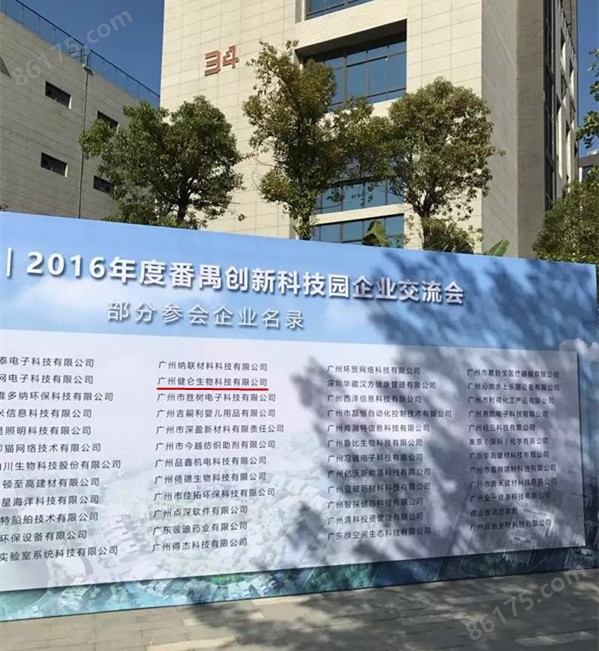請輸入產品關鍵字:
郵編:510660
聯系人:楊永漢
電話:86-020-82574011
傳真:86-020-32206070
手機:13802525278
留言:發送留言
個性化:www.jianlun45.com
網址:www.jianlun.com
商鋪:http://www.xldjsj.com/st199246/
【產品簡介】
【詳細說明】
鼠型斑疹傷寒立克次體IgG免疫熒光玻片
Rickettsia typhi IgG IFA Kit
廣州健侖生物科技有限公司
主要用途:用于檢測人血清中的鼠型斑疹傷寒立克次體IgG抗體
產品規格:12 孔/張,10 張/盒
主要產品包括:包柔氏螺旋體菌、布魯氏菌、貝納特氏立克次體、土倫桿菌、鉤端螺旋體、新型立克次體、恙蟲病、立克次體、果氏巴貝西蟲、馬焦蟲、牛焦蟲、利什曼蟲、新包蟲、弓形蟲、貓流感病毒、貓冠狀病毒、貓皰疹病毒、犬瘟病毒、犬細小病毒等病原微生物的 IFA、MIF、ELISA試劑。
鼠型斑疹傷寒立克次體IgG免疫熒光玻片
我司還提供其它進口或國產試劑盒:登革熱、瘧疾、西尼羅河、立克次體、無形體、蜱蟲、恙蟲、利什曼原蟲、RK39、漢坦病毒、深林腦炎、流感、A鏈球菌、合胞病毒、腮病毒、乙腦、寨卡、黃熱病、基孔肯雅熱、克錐蟲病、違禁品濫用、肺炎球菌、軍團菌、化妝品檢測、食品安全檢測等試劑盒以及日本生研細菌分型診斷血清、德國SiFin診斷血清、丹麥SSI診斷血清等產品。
歡迎咨詢
歡迎咨詢2042552662

| JL-FL31 | 康氏立克次氏體IgM ELISA | Rickettsia conorii IgM ELISA Kit | 用于檢測人血清中的康氏立克次氏體IgM抗體 |
| JL-FL32 | 斑點熱立克次體IgG ELISA | Spotted fever group IgG ELISA Kit | 用于檢測人血清中的斑點熱立克次體IgG抗體 |
| JL-FL33 | 斑疹傷寒立克次體IgG ELISA | Typhus group IgG ELISA Kit | 用于檢測人血清中的斑疹傷寒立克次體IgG抗體 |
| JL-FL34 | 試劑盒 | Rickettsia typhi IgG IFA Kit | 用于檢測人血清中的鼠型斑疹傷寒立克次體IgG抗體 |
| JL-FL35 | 鼠型斑疹傷寒立克次體IgG ELISA | R. typhi IgG ELISA Kit | 用于檢測人血清中的鼠型斑疹傷寒立克次體IgG抗體 |
| JL-FL36 | 鼠型斑疹傷寒立克次體IgM ELISA | R. typhi IgM ELISA Kit | 用于檢測人血清中的鼠型斑疹傷寒立克次體IgG抗體 |
| JL-FL37 | akari立克次體 IgG ELISA | R. akari IgG ELISA Kit | 用于檢測人血清中的akari立克次體IgG抗體 |
| JL-FL38 | parkeri立克次體IgG ELISA | R. parkeri IgG ELISA Kit | 用于檢測人血清中的parkeri立克次體IgG抗體 |
| JL-FL39 | montanensis立克次體IgG ELISA | R. montanensis IgG ELISA Kit | 用于檢測人血清中的montanensis立克次體IgG抗體 |
| JL-FL40 | EB病毒衣殼IgG免疫熒光玻片試劑盒 | EBV Viral Capsid IgG IFA Kit | 用于檢測人血清中的EB病毒衣殼IgG抗體 |
| JL-FL41 | EB病毒衣殼IgM免疫熒光玻片試劑盒 | EBV Viral Capsid IgM IFA Kit | 用于檢測人血清中的EB病毒衣殼IgM抗體 |
| JL-FL42 | EB病毒早期抗原IgG免疫熒光玻片試劑盒 | EBV Early Antigens IgG IFA Kit | 用于檢測人血清中的EB病毒早期抗原IgG抗體 |
二維碼掃一掃
【公司名稱】 廣州健侖生物科技有限公司
【】 楊永漢
【】
【騰訊 】 2042552662
【公司地址】 廣州清華科技園創新基地番禺石樓鎮創啟路63號二期2幢101-3室
【企業文化】


在所附上的視頻上,顯微照片的時間序列顯示了,四桿狀酵母細胞收縮環的形成和收縮。一收縮環的蛋白質顯示為白色。該蛋白質簇環繞每個細胞的中間積累,然后冷凝成一個收縮環夾住細胞使之分為兩個。
近期的研究結果證實了,新的心肌細胞可以低速率生成,表明了心臟干細胞的存在。但人們對于這些細胞的起源卻并不清楚。
范德比爾特大學醫學、細胞與發育生物學副教授Antonis Hatzopoulos博士和同事們推測,排列于血管上內皮細胞可能有潛力生成新的心肌細胞。他們知道,在發育過程中內皮細胞可生成包括血細胞在內的其他細胞類型。
現在,利用一些*技術在小鼠模型中“追蹤”細胞,他們證實冠狀動脈中的內皮細胞可以生成健康心臟中的新心肌細胞。他們發現在冠狀動脈中有兩種心臟干細胞群:靜息的心臟干細胞群位于血管中膜層,增殖心臟干細胞群位于血管外膜層。
Hatzopoulos說,發現冠狀動脈充當了心臟干細胞的“微環境”具有有趣的含義。美國的1號殺手:冠狀動脈病會影響這一微環境。他說:“我們的研究表明,冠狀動脈病不僅可以阻斷動脈,引起心臟病發作,還可通過影響心臟維持和再生的途經來導致心力衰竭。”
在以往的研究中,Hatzopoulos和同事們證實心臟病發作后,內皮細胞可生成一些產生瘢痕組織的成纖維細胞。“看起來相同的內皮系統在穩態過程中生成了肌細胞,并在心肌梗死后轉換生成了瘢痕組織。損傷之后,再生轉向了纖維化,”他說。
了解這種轉換有可能促成一些新的策略,在心臟病發作后、衰老過程中或在諸如糖尿病及高血壓等疾病中再生和生成新的心肌。
Hatzopoulos說:“如果我們可以了解損傷后發生的這種命運轉換的分子調控機制,或許我們就可以采用某種化合物或藥物來恢復再生,生成肌肉而不是瘢痕。我們認為這是一次機會來改善我們對心肌梗死后來到診所的患者的治療方式。
近期的研究結果證實了,新的心肌細胞可以低速率生成,表明了心臟干細胞的存在。但人們對于這些細胞的起源卻并不清楚。
范德比爾特大學醫學、細胞與發育生物學副教授Antonis Hatzopoulos博士和同事們推測,排列于血管上內皮細胞可能有潛力生成新的心肌細胞。他們知道,在發育過程中內皮細胞可生成包括血細胞在內的其他細胞類型。
現在,利用一些*技術在小鼠模型中“追蹤”細胞,他們證實冠狀動脈中的內皮細胞可以生成健康心臟中的新心肌細胞。他們發現在冠狀動脈中有兩種心臟干細胞群:靜息的心臟干細胞群位于血管中膜層,增殖心臟干細胞群位于血管外膜層。
Hatzopoulos說,發現冠狀動脈充當了心臟干細胞的“微環境”具有有趣的含義。美國的1號殺手:冠狀動脈病會影響這一微環境。他說:“我們的研究表明,冠狀動脈病不僅可以阻斷動脈,引起心臟病發作,還可通過影響心臟維持和再生的途經來導致心力衰竭。”
在以往的研究中,Hatzopoulos和同事們證實心臟病發作后,內皮細胞可生成一些產生瘢痕組織的成纖維細胞。“看起來相同的內皮系統在穩態過程中生成了肌細胞,并在心肌梗死后轉換生成了瘢痕組織。損傷之后,再生轉向了纖維化,”他說。
On the attached video, the time series of photomicrographs shows the formation and contraction of the collapsible rings of four-rod yeast cells. A shrunken protein appears white. The protein cluster accumulates around the middle of each cell, then condenses into a constriction ring that clamps the cell and breaks it into two.
Recent findings confirm that new cardiomyocytes can be generated at low rates, indicating the presence of cardiac stem cells. But people do not know the origin of these cells.
Antonis Hatzopoulos, Ph.D., associate professor of medicine, cell and developmental biology at Vanderbilt University, and colleagues speculate that lining up vascular endothelial cells may have the potential to generate new cardiomyocytes. They know that endothelial cells can generate other cell types, including blood cells, during development.
Now, using advanced techniques to "track" cells in mouse models, they demonstrate that endothelial cells in the coronary arteries produce new cardiomyocytes in healthy hearts. They found that there are two groups of cardiac stem cells in the coronary arteries: the resting cardiac stem cell population is located in the vascular media layer, and the proliferating cardiac stem cell population is located in the outer vascular layer.
Hatzopoulos said it was interesting to find that the coronary arteries act as a "microenvironment" for heart stem cells. No. 1 killer in the United States: Coronary artery disease can affect this microenvironment. "Our research shows that coronary artery disease can not only block the arteries and cause heart attacks but can also lead to heart failure through pathways that affect heart maintenance and regeneration," he said.
In previous studies, Hatzopoulos and colleagues confirmed that after a heart attack, endothelial cells produce some scar tissue-producing fibroblasts. "The seemingly identical endothelium generates muscle cells during homeostasis and converts to scar tissue after myocardial infarction, and after the injury, the regenerative turns to fibrosis," he said.
Understanding this transition may lead to new strategies to regenerate and generate new myocardium during a heart attack, during aging or in diseases such as diabetes and hypertension.
Hatzopoulos said: "If we can understand the molecular mechanisms of this fate shift that occur after a lesion, perhaps we could use a compound or drug to regain regeneration and produce muscle instead of scar, and we think this is an opportunity to improve us Treatment of patients who come to the clinic after myocardial infarction.
Recent findings confirm that new cardiomyocytes can be generated at low rates, indicating the presence of cardiac stem cells. But people do not know the origin of these cells.
Antonis Hatzopoulos, Ph.D., associate professor of medicine, cell and developmental biology at Vanderbilt University, and colleagues speculate that lining up vascular endothelial cells may have the potential to generate new cardiomyocytes. They know that endothelial cells can generate other cell types, including blood cells, during development.
Now, using advanced techniques to "track" cells in mouse models, they demonstrate that endothelial cells in the coronary arteries produce new cardiomyocytes in healthy hearts. They found that there are two groups of cardiac stem cells in the coronary arteries: the resting cardiac stem cell population is located in the vascular media layer, and the proliferating cardiac stem cell population is located in the outer vascular layer.
Hatzopoulos said it was interesting to find that the coronary arteries act as a "microenvironment" for heart stem cells. No. 1 killer in the United States: Coronary artery disease can affect this microenvironment. "Our research shows that coronary artery disease can not only block the arteries and cause heart attacks but can also lead to heart failure through pathways that affect heart maintenance and regeneration," he said.
In previous studies, Hatzopoulos and colleagues confirmed that after a heart attack, endothelial cells produce some scar tissue-producing fibroblasts. "The seemingly identical endothelium generates muscle cells during homeostasis and converts to scar tissue after myocardial infarction, and after the injury, the regenerative turns to fibrosis," he said.


 QQ交談
QQ交談 MSN交談
MSN交談
